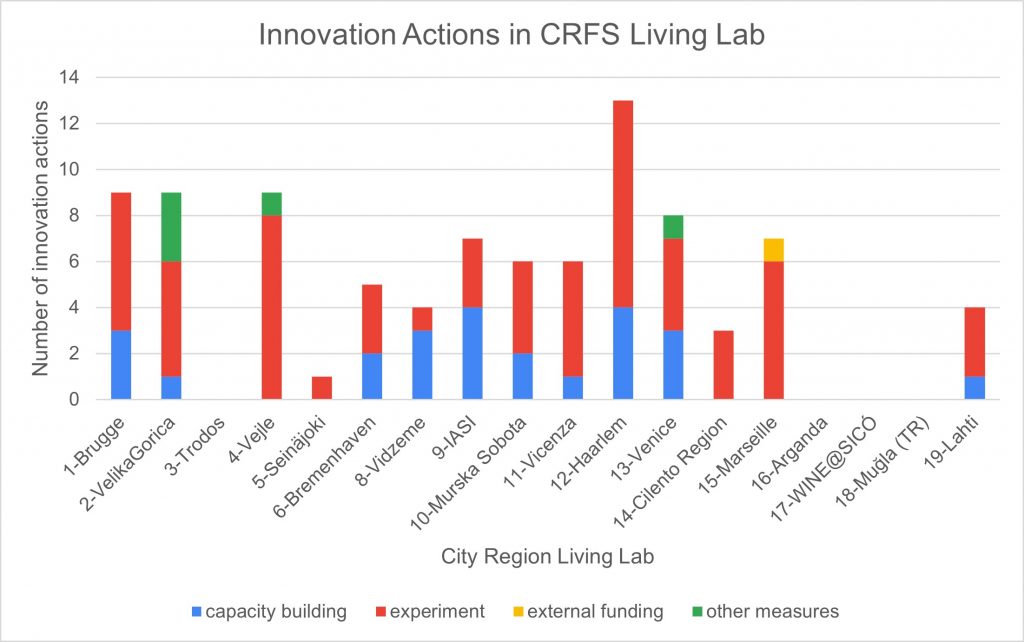The CRFS Living Labs have implemented its action plans since November 2022. Living Labs’ main actors are Cities2030 consortium partners supported by local multi-actor stakeholders.
The nineteen (19) forerunning CRFS Living Labs fall into 2 groups:
- The first 12 labs’ are defined and profiled already in the grant agreement which allocates them large resources for piloting in their own city region
- The next 7 labs are so-called “bonus” piloting labs. They have very limited resources for running experiments but nevertheless, the operative consortium partners are willing to give their 5 cents.
The action plan of the living lab encompasses the current state analysis, future state vision, gap analysis, challenge statements, experiment descriptions, key performance indicators, and a description of available resources to carry out innovation actions.
The term innovation action encompasses:
- capacity-building actions which are addressed to local stakeholders and target groups
- experiments that are addressed on a delimited target field of the urban food system
- external funding opportunities and initiatives
- other possible actions and measures
By the end of April 2023, the Cities2030 Living Labs have reported 24 capacity-building actions, 61 experiments, 1 external funding, and 5 other measures. When we look into individual Living Labs’ achievements, the visualisation below shows the current state.
Cities2030 consortium partners and Living Labs have still many months to go and carry on innovation actions for their community.

In addition to the above quantitive analysis of innovation actions, all Living Labs will assess what are the results and impacts of their innovation actions. The qualitative assessment takes a stand on how innovation actions influence on food system transition towards the FOOD2030 policy.
